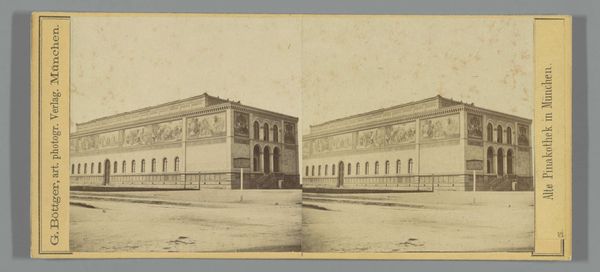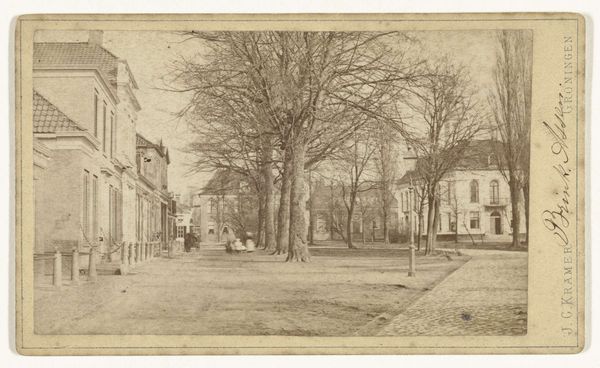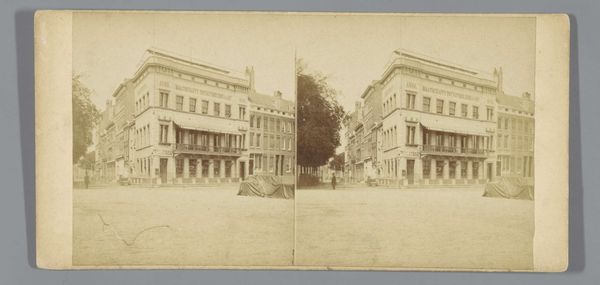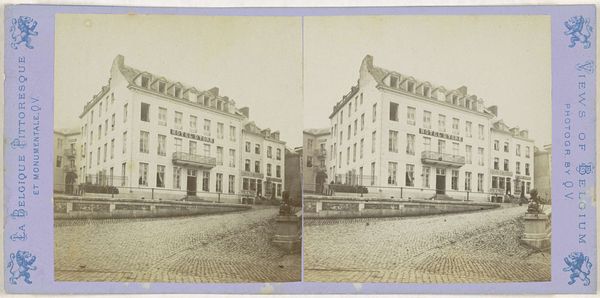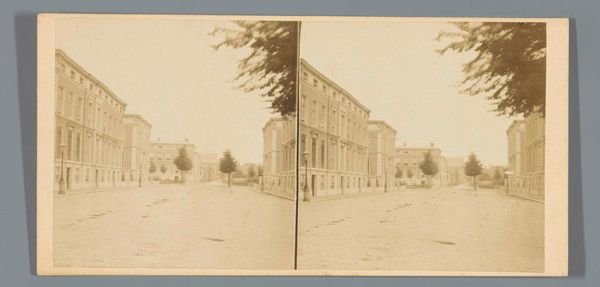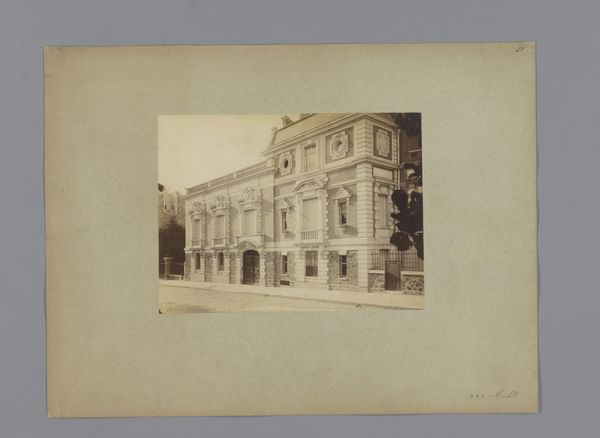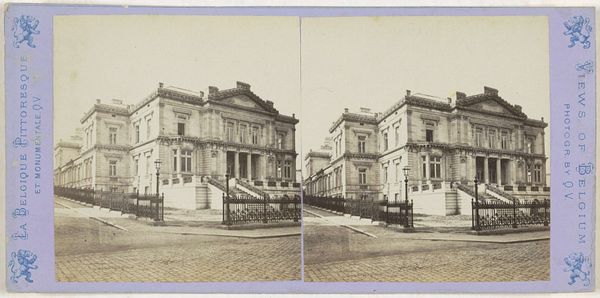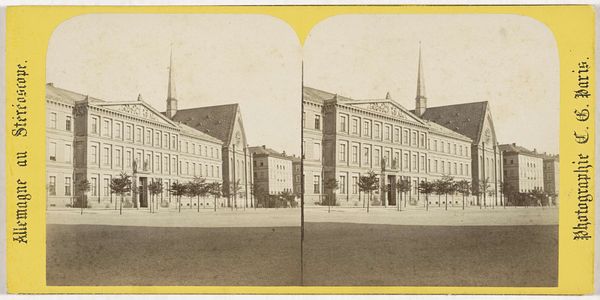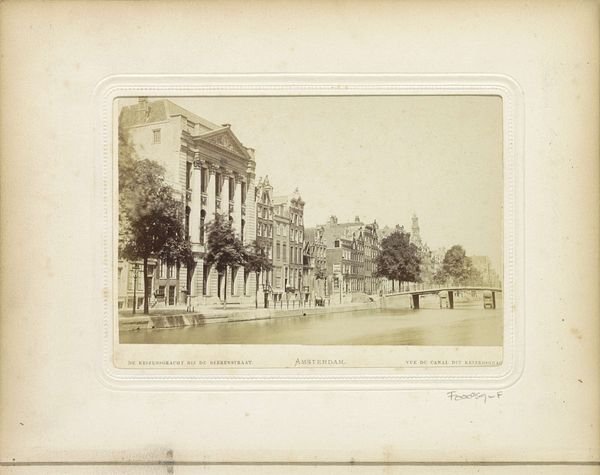
print, daguerreotype, photography
#
16_19th-century
# print
#
daguerreotype
#
photography
#
cityscape
Dimensions: height 83 mm, width 174 mm
Copyright: Rijks Museum: Open Domain
Curator: Pieter Oosterhuis's "Gebouwen van Artis, Amsterdam," taken between 1855 and 1870, captures the early architecture of the Artis Zoo. The work, held at the Rijksmuseum, presents a cityscape in warm sepia tones through the innovative medium of early photography, likely a daguerreotype. Editor: My first impression is the stillness. It feels almost ghostly, with the bare trees framing these imposing buildings. There is such a focus on form here, this composition of parallel lines and balanced shapes gives a sense of monumentality to the picture. Curator: Precisely. The very choice to photograph Artis Zoo in its nascent years says a lot about 19th-century Amsterdam’s aspirations for education and scientific progress. The zoo was more than just entertainment; it was a deliberate act of civic branding. Editor: It’s interesting you mention branding because the sepia tones render an even tone across structures, making their subtle angular difference disappear. How much control do you think the photographer had to give the whole piece a uniform mood? Curator: The photographer had considerable control in the image selection, composition, and timing of capture. But in truth, I imagine some visual constraints were simply effects of the slow, nascent processes inherent in 19th century daguerreotypes, since photography was only starting to become socially important for archiving important public constructions. Editor: So, a lucky artifact in the end! If the photographer wanted to freeze an institution, it is remarkable how alive the lines and structure seem even today. I feel this work highlights how photography finds balance and rhythm in simple geometric shape combinations, which were perhaps less obvious to those who lived around the scene daily. Curator: I agree; in many ways the image preserves a vision of societal optimism and architectural achievement, something perhaps very tangible for citizens of Amsterdam during that period of development and self-definition. Editor: It’s that quiet hum, isn't it? Looking closer I would only want the modern viewer to focus on structure—see the lines, and then realize what it represents. Curator: Thank you. I feel enlightened when art manages to transport history and allow us an entry-point, just by noticing things we might normally take for granted.
Comments
No comments
Be the first to comment and join the conversation on the ultimate creative platform.
